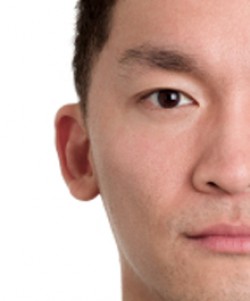Insights into How Deaf Brain Processes Touch and Sight
Insights into How Deaf Brain Processes Touch and Sight
People who are born deaf process the senses of touch and sight differently than those who are born with normal hearing, a new study reports. The finding supports the notion that loss of a sense, such as hearing, affects brain development.

Hearing loss that is present at birth is called congenital deafness. It occurs in 1 out of every 1,000 to 2,000 newborns. Previous research has shown that deaf people use their brains differently than hearing people. They use the auditory cortex—the sound-related part of the brain—to help process peripheral vision and motion much better than hearing people. There have been no studies, however, looking at how touch and sight together are processed differently in deaf people.
To gain new insights, a research team led by Dr. Christina Karns at the University of Oregon examined touch and sight processing in both deaf and hearing people. The scientists used functional MRI to measure reactions to stimuli in different brain regions, including Heschl’s gyrus, which processes auditory information. The study was funded by NIH’s National Institute on Deafness and Other Communication Disorders (NIDCD).
The team recruited 13 congenitally deaf and 12 hearing adults. The researchers designed a unique apparatus that the participants wore like headphones while in the MRI scanner. To stimulate touch, silent puffs of air were delivered above the right eyebrow and to the right cheek via a flexible tube. To stimulate sight, brief pulses of light were delivered by a cable mounted directly below the air-puff nozzle.
The participants were exposed to touch and sight stimuli separately and simultaneously. They were then tested for a phenomenon called the double flash illusion. In hearing people, a double flash illusion occurs when a single flash of light paired with 2 or more short sounds is sensed as multiple flashes of light. Instead of sound, the researchers paired double air puffs with a single flash of light. Results were published on July 11, 2012 in theJournal of Neuroscience.
The researchers found that deaf participants had more activity from the touch and sight stimuli in Heschl’s gyrus than did the hearing participants. In the double flash illusion test, deaf participants were susceptible to the air-puff induced illusion, but hearing participants only saw a single flash. Those who saw a double flash had the greatest activity in a region of Heschl’s gyrus, although not all deaf brains responded equally. Deaf participants with the highest response to an air puff in the Heschl’s gyrus also had the strongest response to the illusion.
“We designed this study because we thought that touch and vision might have stronger interactions in the auditory cortices of deaf people,” Karns says. “As it turns out, the primary auditory cortex in people who are profoundly deaf focuses on touch, even more than vision, in our experiment.”
This finding may help lead to new ways to educate deaf students using touch and sight. It could also inform the development of cochlear implants, which convert sound into electric impulses that are delivered directly to hearing areas in the brain.
###
* The above story is reprinted from materials provided by National Institutes of Health (NIH)
** The National Institutes of Health (NIH) , a part of the U.S. Department of Health and Human Services, is the nation’s medical research agency—making important discoveries that improve health and save lives. The National Institutes of Health is made up of 27 different components called Institutes and Centers. Each has its own specific research agenda. All but three of these components receive their funding directly from Congress, and administrate their own budgets.




















